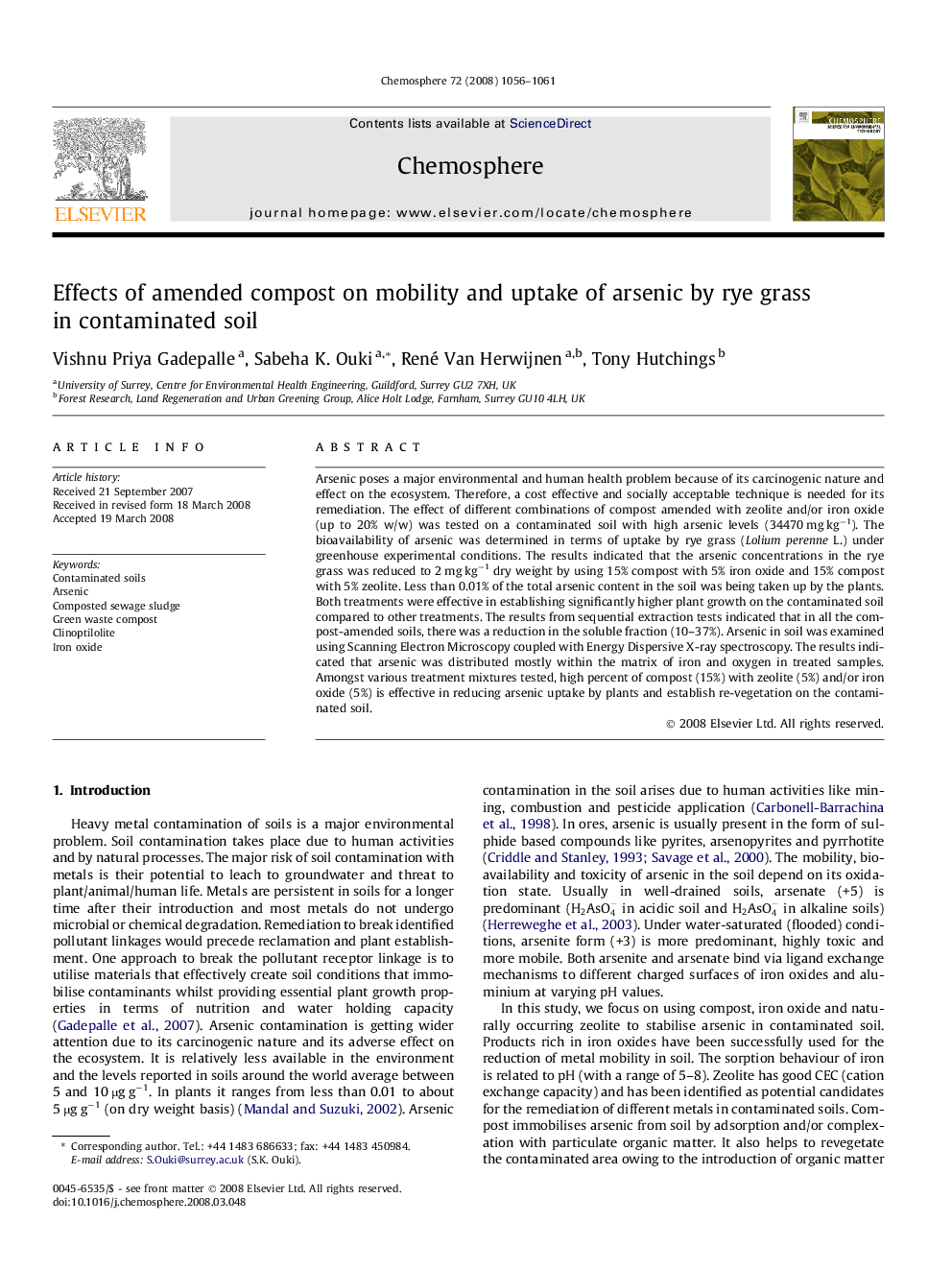| Article ID | Journal | Published Year | Pages | File Type |
|---|---|---|---|---|
| 4413680 | Chemosphere | 2008 | 6 Pages |
Arsenic poses a major environmental and human health problem because of its carcinogenic nature and effect on the ecosystem. Therefore, a cost effective and socially acceptable technique is needed for its remediation. The effect of different combinations of compost amended with zeolite and/or iron oxide (up to 20% w/w) was tested on a contaminated soil with high arsenic levels (34470 mg kg−1). The bioavailability of arsenic was determined in terms of uptake by rye grass (Lolium perenne L.) under greenhouse experimental conditions. The results indicated that the arsenic concentrations in the rye grass was reduced to 2 mg kg−1 dry weight by using 15% compost with 5% iron oxide and 15% compost with 5% zeolite. Less than 0.01% of the total arsenic content in the soil was being taken up by the plants. Both treatments were effective in establishing significantly higher plant growth on the contaminated soil compared to other treatments. The results from sequential extraction tests indicated that in all the compost-amended soils, there was a reduction in the soluble fraction (10–37%). Arsenic in soil was examined using Scanning Electron Microscopy coupled with Energy Dispersive X-ray spectroscopy. The results indicated that arsenic was distributed mostly within the matrix of iron and oxygen in treated samples. Amongst various treatment mixtures tested, high percent of compost (15%) with zeolite (5%) and/or iron oxide (5%) is effective in reducing arsenic uptake by plants and establish re-vegetation on the contaminated soil.
